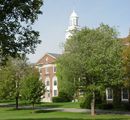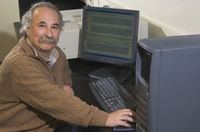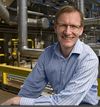Bioelectronics and biosensors
The biosensors and bioelectronics symposium will be devoted to all aspects of modern bioelectronics, including the state-of-the-art in enzyme-based biosensors, immune-sensors, DNA sensors, lab-on-a-chip, biofuel cells, biochemical information processing systems (biomolecular computing) and bioactuators. The topics discussed at the symposium will include the use of nano-structured materials and functionalized interfaces for bioelectronic applications. Integration of various systems for the signal processing, amplification and actuation will be particularly emphasized in the lectures presented in the symposium. Leading specialists in this area will present the novel results and facilitate the discussions with young researchers and students. The symposium will include several invited lectures given by leading experts in the field, oral presentations from young postdoctoral researchers and posters prepared by students.
Session organizer
Prof. Evgeny Katz received his Ph.D. from Frumkin Institute of Electrochemistry (Moscow), Russian Academy of Sciences, in 1983. He was a senior researcher in the Institute of Photosynthesis (Pushchino), Russian Academy of Sciences, in 1983-1991. In 1992-1993 he performed research at München Technische Universität (Germany) as a Humboldt fellow. Later, Dr. Katz was a research assistant (1993-1999) and research associate professor (2000-2006) at the Hebrew University of Jerusalem. In 2006 he became Milton Kerker Chaired Professor at the Department of Chemistry and Biomolecular Science, Clarkson University, NY. He has published more than 280 papers in peer-reviewed journals with a total citation more than 15,000 (Hirsch-index 58), and he holds 20 international patents. He serves as the Editor-in-Chief for IEEE Sensors Journal, Vice-Chair of "Bioelectrochemistry" Division of the International Society of Electrochemistry and as a member of the editorial boards of many international journals (including Biosensors and Bioelectronics, Sensors and Actuators, Electroanalysis). His scientific interests are in the areas of bioelectronics, biosensors and biofuel cells. Currently he is actively involved in research in biocomputing, signal-responsive materials and their applications in logically operating biosensors.
Confirmed speakers
- Prof. Ian Suni, Ph. D., Dept. of Chemical Engineering, Clarkson University. "Detection of Allergenic Peanut Proteins by Electrochemical Impedance Spectroscopy"
- Prof. Omowunmi A. Sadik, Ph.D., Professor of Chemistry & Director of Graduate Studies and Director, Center for Advanced Sensors & Environmental Systems (CASE), State University of New York at Binghamton.
- Prof. James F. Rusling, Professor at University of Connecticut and SFI Walton Research Fellow, NUI Galway, Ireland.
- Prof. Largus (Lars) Angenent, Ph.D., Associate Professor, Biological and Environmental Engineering, Cornell University, "Addition of oxygen in microbial anodes of bioelectrochemical cells to increase the electric signal".
- Prof. Silvana Andreescu, Ph.D., Assistant Professor, Department of Chemistry, Clarkson University: "Implantable microbiosensors for in vivo measurement of neurological activity and nanoparticle-induced toxicity".



